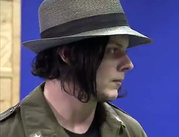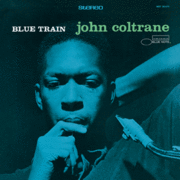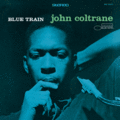
While most of the buzz about the resurgence of vinyl records has focused on the skyrocketing sales of grooved discs designed to spin on turntables, the vinyl renaissance has reminded many of us old-timers how much we missed the album-cover art on record jackets. Whether it was using the gatefold of “Sgt. Pepper’s Lonely Hearts Club Band” to clean a Baggie of pot or getting lost in the psychedelic lettering of “American Beauty,” album-cover art was an important part of how multiple generations of fans experienced music.
“You never knew who was going to be the next million-seller.”
That experience became less and less common in the late 1970s and throughout the 1980s, when the rise of cassettes and CDs shrunk the dimensions of the artwork on album covers from 12-inches square to just five, or even less. A few decades later, beautiful and intricate album-cover art was being crammed onto the tiny thumbnails that accompanied digital music played on handheld devices.
In fact, the art of the record jacket never went away, as the current vinyl revival so clearly shows. For more than 50 years, one of the best album-art printers has been Stoughton Printing Company, which opened for business in 1964 in Los Angeles before moving to more spacious quarters in nearby City of Industry. In its earliest days, the company kept the lights on by printing the round labels that were glued to the centers of vinyl discs. Before long, though, the firm had branched out to album covers, which were expertly printed before being glued or “tipped” onto the paperboard jackets that actually protected a record. This old-school technique from the 1950s allowed Stoughton to use better paper than the heavy jacket stock it also printed on, and good paper is what makes album-cover art pop.

Jack Stoughton, Jr. stands next to his company’s first Heidelberg “Windmill” letterpress. Behind him is a photomontage made out of aluminum printing plates of his father, Jack Stoughton, Sr.
On October 1, 2016, the International Printing Museum in Carson, California, will open an exhibition called “The Music of the Presses: The Stoughton Printing Company Vinyl Jacket Collection” as a part of its annual Los Angeles Printers Fair. The show will feature about 50 Stoughton record jackets, from the 1960s to the present, and will remain on view at the museum for several months.
“Music of the Presses” is more than a catchy title for the Stoughton exhibition. “It’s actually a traditional, 18th-century printer’s term,” the museum’s director, Mark Barbour, says, “to describe the sounds of the printing shop—the presses creaking and groaning, the pressmen grunting, paper moving. In a print shop, those were considered beautiful sounds because they meant the shop was working and running, that the owner had grist in his mill, as they used to say. Basically, it was the sound of making money.”
Stoughton has been making that sort of music for quite a while now, initially under the guidance of Jack Stoughton, Sr.—since the late 1980s, Jack Stoughton, Jr., and his younger brother, Clay, have been at the company’s helm. Between them, these generations of Stoughtons have created the packaging for some of the biggest names in the music business, from The Doors to Led Zeppelin, from Neil Young to Jack White. And next year, Stoughton will produce the packaging for the “Voyager Golden Record: 40th Anniversary Edition” vinyl box set, which will include three vinyl LPs, a hardcover book, and a poster, all contained within a cloth-covered, gold-foil-inlay box.

A small fraction of the album covers printed at Stoughton in the company’s lobby.
Jack Sr. may have started the company, but Jack Jr. was perhaps best positioned to enjoy the music scene his father’s company was such an essential part of. “Starting when I was 12, I spent the better part of every summer working at Stoughton,” Jack Jr. tells me when we spoke recently over the phone. “I had two old sisters, so I got to hear a lot of different kinds of music sooner than many kids my age. Nancy was a huge Beatles fan—she went to the concerts at Dodger Stadium and the Hollywood Bowl. Linda was more into the Rolling Stones. I liked bands like the Electric Flag and the Sonics, but also Joan Baez. I still put on Joni Mitchell and Judy Collins. I was a huge Buffalo Springfield fan, which got me into Loggins and Messina because Jimmy Messina was in Springfield. I saw The Doors, I saw Chicago at the Troubadour in L.A., and I got to go up to San Francisco with a friend to see Cream at the Fillmore. Today, I also listen to classical music, so I’m all over the map.”
Jack Jr.’s eclectic taste no doubt stems from his family’s company’s role in the music business, which requires them to print labels and covers for whatever a client, usually a record executive, thinks will be hot. “One record I remember printing a lot of labels for was Hugh Masekela’s ‘Grazing in the Grass,’ a 45 for Uni Records. It was a great song; it still is a great song. Every day in the summer of 1968, I must have printed 10,000, 15,000, 20,000, 50,000 of those things. The following summer, ‘Sugar, Sugar’ by the Archies was a huge hit for Calendar Records. Talk about going full circle! By 1971, it was all about Carole King’s ‘Tapestry’ album for Ode Records. I probably personally printed a million of those one summer when I was in high school.”

Blank labels for Tamla, Motown, and Gordy 45s.
Printing and affixing labels to 45s like “Sugar, Sugar” is simple compared to printing album covers like “Tapestry,” which must be “tipped” onto a record jacket. “The tip-on style that Stoughton perfected is very labor-intensive,” Mark Barbour says. “Essentially, a printed sheet is glued, or tipped-on, to a pre-printed cover. The cover itself might have sections of it that are also printed, so getting this sheet laid down and glued correctly is no small feat. You can actually feel the edge of the printed sheet, which is about an eighth of an inch in from all corners of the jacket. It’s one thing to make 10, 20, or 100 tip-on jackets for a custom order, but to produce thousands upon thousands of them, to accurately lay down these tipped-on sheets and get all the other elements to line up, that’s really something. It’s what Stoughton is known for.”
“The Old Style jackets—that’s our trademarked name—can be printed on a variety of papers, substrates of any sort, really.” Jack Jr. says. “It can be book cloth, paper, foil, lots of different things, which gives you the ability to create many types of looks. We have highly specialized machines that are strictly purposed to make the Old Style jackets, be it an Old Style single, an Old Style gatefold, a gatefold single, you name it.”

At Stoughton Printing Company, cover art is still mounted to jacket blanks by hand.
If there’s a secret sauce to Stoughton, one of the ingredients is certainly its people, many of whom have been with the company for a long time, which means the institutional memory at Stoughton runs deep. “Some of our employees have been with us for decades,” Jack Jr. says. “They’ve seen it all.” Just as important is the fact that for every Led Zeppelin or Jack White, there have been countless other musicians of lesser acclaim who have turned to Stoughton to print their album art and design the packaging encasing their vinyl.
“When we started out,” Jack Jr. says, “we appealed to independent labels and artists. That was our niche. We had one customer, way back when, who sold his car to help pay for his record pressing. We had printed his jackets, so he came out here on the bus from Hollywood to City of Industry, which was about 25 miles eastbound. He probably made five or six bus transfers to get here. All he wanted was one box of 100 jackets, which he was going to take to the record-pressing plant so they could stuff them with his records, which he wanted to sell at a show that night. The jackets were ready, so we drove him and the jackets to the record-pressing plant, waited for them to get stuffed, and then took him home. He called us the following Monday to say he had been able to sell around 240 records that night, which effectively paid for his entire project. I couldn’t tell you that young man’s name today, and I don’t even remember if he went on to have any hits. But that was the way my dad treated everybody. In part, it was because you never knew who was going to be the next million-seller, but it was also to honor the dreams independent artists brought to us.”

The “Winkler,” as it’s called, diecuts, folds, and glues direct-to-board jackets.
Lately, Stoughton has been trying to honor the look of the classic albums it’s been asked to repackage, since the current vinyl-records market is a mix of new music and reissues. In some cases, these reissues summon Stoughton’s album-art forensic skills, since the only direction they get from a label is to reproduce a jacket as faithfully as possible. “There is very little stuff left with the record companies,” Jack Jr. says of the original album art. “At some point after CDs came out, the labels began to get rid of all the artwork that had been used on album covers. In fact, for quite a while, they were simply photographing vinyl jackets and reducing them down in order to make the packaging for CDs. They weren’t really interested in producing something of high quality. Instead, they would just take something that was designed for a 12-inch square and scale it down.”
The work Stoughton has done for jazz label Blue Note is a rare example of having original art to work with. “We have all the original Francis Wolff photography available to us,” Jack Jr. says of the black-and-white images that gave so many Blue Note albums of the 1950s and ’60s their “cool” and distinctive look. “To reproduce that photography in a way that makes it look like it was printed in 1960, we use archival paper and a special ink. The goal is to make the mid-tones richer and fuller than they would be if printed today.”

Here, a Stoughton employee mounts the outside cover onto what will eventually be a gatefold jacket.
Rock classics also get the Stoughton treatment. “About 20 years ago, we redid ‘Tommy’ by The Who. When we researched the paper the booklet was printed on, we found out it was only available in the U.K., so we imported the paper stock from England. We also had to make custom inks, because the black that was used had a little bit of a reddish brown hue to it, so we duplicated that. And on and on. It sort of became a labor of love, but this is an iconic piece, the first rock opera. When it finally came out, the reviewers said that not only was the recording cleaner and crisper, but also the jacket was better than the original Parlophone produced in England. And I went, ‘Hallelujah!’”
Some of the most elaborate reissues are boxed sets like “Mothership” for Led Zeppelin. “Neil Young’s ‘A Letter Home’ was also a fun one,” Jack Jr. says. “It contained a CD, a DVD, seven 6-inch records, a couple of vinyl LPs, and a booklet. We had to come up with a platform that would hold all these pieces in place. It ended up being a sort of backward pyramid, with the biggest piece on top. For the box itself, we made it look like an old worn-out, reel-to-reel tape box you might find lying around a recording studio. It was brilliant.”

Neil Young’s “A Letter Home” includes a CD, a DVD, seven 6-inch records, two vinyl LPs, and a 32-page booklet.
“That’s one of the best aspects of the vinyl revival,” Barbour says of the packaging. “It’s not just the full, rich sound you get on vinyl, but also the chance to spend some time with the printed artifact—the jacket, the photographs, the artwork, the words. That aspect of our experience of music has gotten lost in our digital world.”
“Music is unique in that the packaging can really play a part in the listening experience,” Jack Jr. agrees. “You put the vinyl on the turntable, you listen, and you read the liner notes to understand how the session came about, who the musicians were, those kinds of things. We get to produce something that’s more than just packaging—it becomes as much a part of the finished product as the music itself.”




















 Your Turntable Is Not Dead: Inside Jack White’s Vinyl Record Empire
Your Turntable Is Not Dead: Inside Jack White’s Vinyl Record Empire
 If You're Too Young to Remember the Magic of Tower Records, Here's What You Missed
If You're Too Young to Remember the Magic of Tower Records, Here's What You Missed Your Turntable Is Not Dead: Inside Jack White’s Vinyl Record Empire
Your Turntable Is Not Dead: Inside Jack White’s Vinyl Record Empire Secrets of the Blue Note Vault: Rediscovering Monk, Blakey, and Hancock
Secrets of the Blue Note Vault: Rediscovering Monk, Blakey, and Hancock Printing EquipmentMetal and wood type, the cabinets designed to hold these blocky letters and…
Printing EquipmentMetal and wood type, the cabinets designed to hold these blocky letters and… RecordsMore than a digitally perfect CD, and way more than a compressed audio file…
RecordsMore than a digitally perfect CD, and way more than a compressed audio file… Mari Tepper: Laying it on the Line
Mari Tepper: Laying it on the Line Nice Ice: Valerie Hammond on the Genteel Charm of Vintage Canadian Costume Jewelry
Nice Ice: Valerie Hammond on the Genteel Charm of Vintage Canadian Costume Jewelry How Jim Heimann Got Crazy for California Architecture
How Jim Heimann Got Crazy for California Architecture Modernist Man: Jock Peters May Be the Most Influential Architect You've Never Heard Of
Modernist Man: Jock Peters May Be the Most Influential Architect You've Never Heard Of Meet Cute: Were Kokeshi Dolls the Models for Hello Kitty, Pokemon, and Be@rbrick?
Meet Cute: Were Kokeshi Dolls the Models for Hello Kitty, Pokemon, and Be@rbrick? When the King of Comedy Posters Set His Surreal Sights on the World of Rock 'n' Roll
When the King of Comedy Posters Set His Surreal Sights on the World of Rock 'n' Roll How One Artist Makes New Art From Old Coloring Books and Found Photos
How One Artist Makes New Art From Old Coloring Books and Found Photos Say Cheese! How Bad Photography Has Changed Our Definition of Good Pictures
Say Cheese! How Bad Photography Has Changed Our Definition of Good Pictures Middle Earthenware: One Family's Quest to Reclaim Its Place in British Pottery History
Middle Earthenware: One Family's Quest to Reclaim Its Place in British Pottery History Fancy Fowl: How an Evil Sea Captain and a Beloved Queen Made the World Crave KFC
Fancy Fowl: How an Evil Sea Captain and a Beloved Queen Made the World Crave KFC
What a wonderful story, well written, funny and factual.
I lamented the demise of the album art. When I first started, my photography business relied on photographing local bands for their indie label projects. Never had the same effect with the CD.
Album art is a genre worth investigating.
Ha! Major congratulations, Jack! I’m glad Stoughton Printing is doing so well under your leadership. At 67, I’m glad I look about as handsome as you do! :-)
Wishing you many successful and happy years ahead, boy!
Chris
Jack, this huge Springfield fan is jealous as hell that you got to see Cream at the Fillmore! But about this article — really enjoyed it, especially the part about the forensics you engage in to try to recreate and improve upon the original. You are so right that album-cover art was/is part of the listening experience. Glad to know it’s in good hands.
What a great feature, Ben. And a tremendous legacy of service and stewardship being left by Stoughton Printing Co. For a current project involving 1970s printed media, I am seeking the cardstock relied upon by printers of album covers. I’ll have to contact SPC. Thanks to your article, I know where the expertise lies.